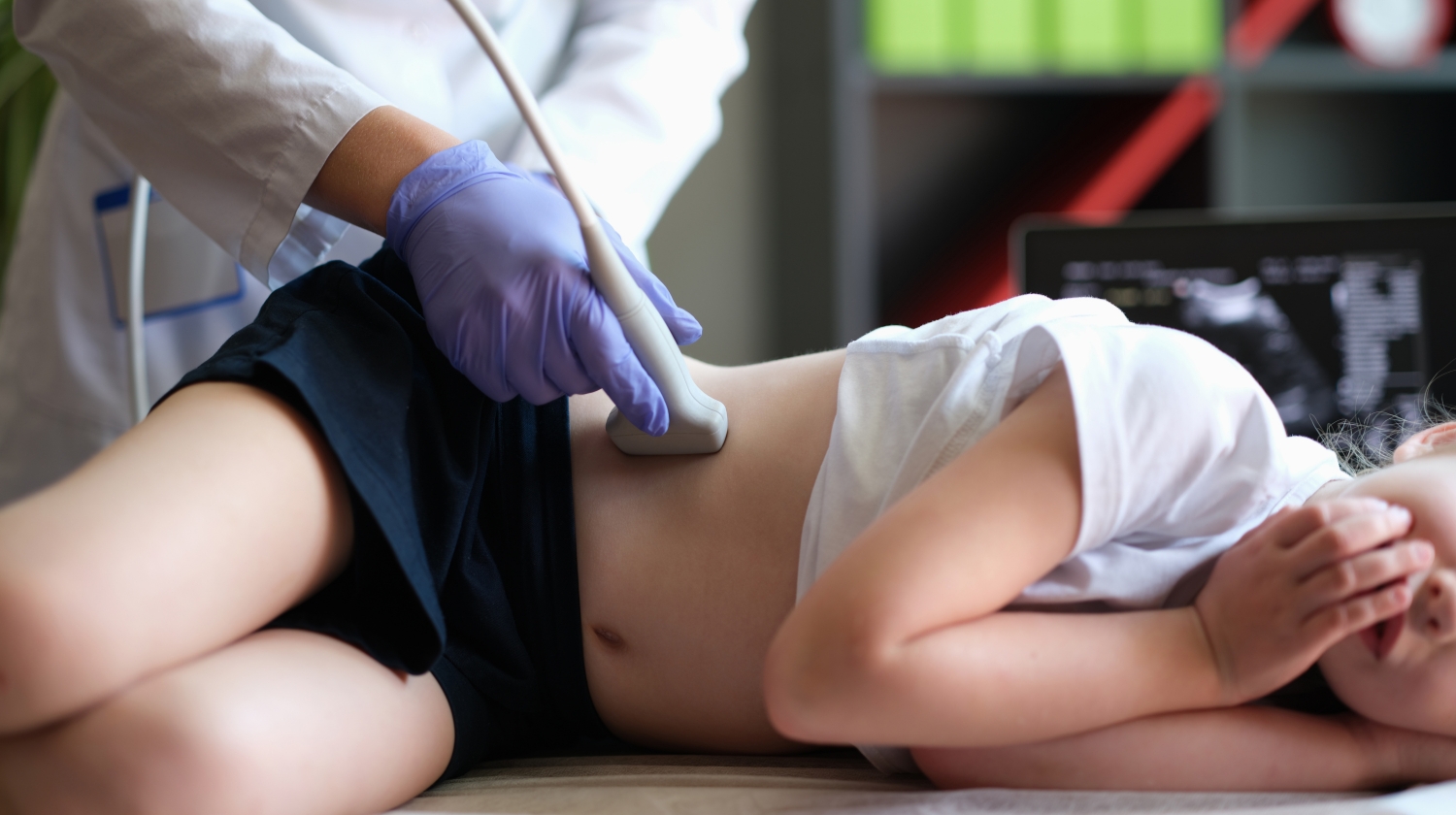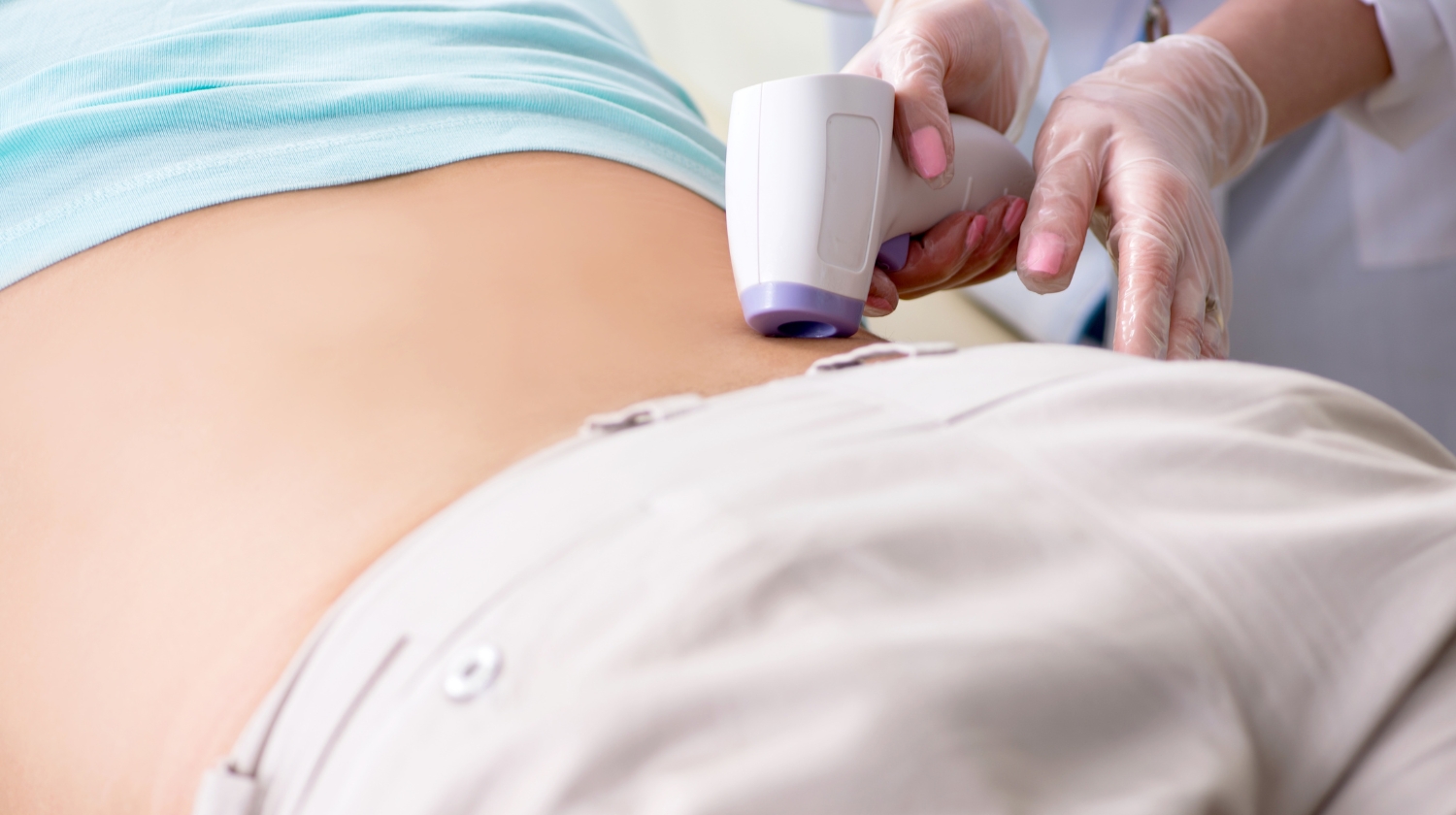 Expert's opinion
Expert's opinion
Expert's opinion
The article is a subjective view on this topic written by writers specializing in medical writing.
It may reflect on a personal journey surrounding struggles with an illness or medical condition, involve product comparisons, diet considerations, or other health-related opinions.
Although the view is entirely that of the writer, it is based on academic experiences and scientific research they have conducted; it is fact-checked by a team of degreed medical experts, and validated by sources attached to the article.
The numbers in parenthesis (1,2,3) will take you to clickable links to related scientific papers.
Ultrasound Kidney Stone: The New Wave In Health Care
![[PTN] Ultrasound Kidney Stone_ Its Roles In Diagnosis & Treatment_Info Content-Healthcanal- words_1500.jpg](https://www.healthcanal.com/wp-content/uploads/2023/06/PTN-Ultrasound-Kidney-Stone_-Its-Roles-In-Diagnosis-Treatment_Info-Content-Healthcanal-words_1500.jpg)
Patients say it can be more painful than childbirth.
Kidney stones are a widespread health issue that affects approximately 1 in 11 Americans at some point in their lives. This condition, often causing debilitating pain and changes in urination, can challenge both healthcare providers and patients.
Moreover, kidney stones tend to recur. About 40% of patients undergo another painful episode within five years! This cycle underscores the urgent need for effective diagnosis, management, and treatment strategies.
Here comes the good news: ultrasound, a noninvasive technology, is now capable of diagnosing and managing[1] kidney stones, promising a transformative impact on healthcare.
Ultrasound Kidney Stone
This article explores the revolutionary role of ultrasound technology in diagnosing and managing kidney stones. We will learn how ultrasound, a noninvasive tool, effectively identifies and treats kidney stones. We will also discuss tips for the management and prevention of kidney stones at home.
How Is Ultrasound Used In Kidney Stone Diagnosis?

The prevalence of kidney stones is rising, with rates in the US[2] rising from 3.2% in 1980 to 10.1% in 2016. These small, hard deposits cause a range of symptoms and complications, from severe pain to urine flow obstruction, and pose significant implications for the nation’s healthcare system.
Symptoms Of Kidney Stones
Kidneys, which are a pair of bean-shaped organs, filter toxins and produce urine from the bloodstream. Sometimes, minerals in the urine crystallize and stick together, forming kidney stones.
Small kidney stones may pass without any obstruction and cause no symptoms, but larger stones can cause sharp pain, changes in urination, and even lead to urinary tract infections.
Kidney stone symptoms[3] can include:
- Severe pain in the lower back and sides
- Pain that radiates to the lower abdomen and groin
- Pain that fluctuates in intensity
- Pink, red, or brown urine
- Nausea and vomiting
- Urine that smells bad or looks cloudy
Kidney Stones In The Emergency Department
Symptoms of kidney stones can come on suddenly and lead the patient to seek emergency care. In the emergency room, the primary goal is usually pain management. However, some patients require urgent surgical intervention to relieve urine backup (often the root cause of the pain).
The medical staff first gives the patient medicine that stops the pain. Medicine can be taken orally or by injection. For patients who experience nausea, additional medications may be needed.
These measures ease the short-term symptoms, however. During this appointment, an emergency doctor will ask for the patient’s information and order tests to confirm the diagnosis of kidney stones. The results of these tests will inform the physician which steps to take and their urgency.
Imaging Tests: Abdominal & Pelvic Ultrasound Vs. CT Scan
Imaging tests are crucial for diagnosis. Two popular methods[4] are the computed tomography (CT) scan and ultrasound. Previously, the first imaging tests of renal stones were primarily performed using CT[5] scans. While CT scans are effective, they expose the patient to radiation that can be harmful accumulated over time.
Ultrasound, on the other hand, uses high-frequency sound waves to create images of your internal organs. Soundwaves are safe and free of radiation and provide three-dimensional pictures of the kidney from different angles, helping physicians determine the stone’s size and location. A randomized controlled trial[6] published in the New England Journal of Medicine found the two imaging modalities have equivalent diagnostic accuracy in the context of emergency diagnosis for patients with a BMI <30. Therefore, the preferred first-line method for most patients is ultrasound.
How Is Ultrasound Used In Kidney Stone Treatment

The distress caused by kidney stones can be formidable, whether it concerns the largest or the tiniest of stone fragments. The good news is that ultrasound technology is rising as an excellent solution.
This non-invasive method can effectively diagnose and treat most kidney stones, offering significant advantages over traditional surgical procedures. The technology uses sound waves, providing the foundation for revolutionary techniques in diagnosing and treating kidney stones.
Let’s explore some key methods that use ultrasound to treat kidney stones[7].
Extracorporeal Shock Wave Lithotripsy (ESWL)
Extracorporeal Shock Wave Lithotripsy (ESWL) is an innovative, non-invasive treatment that uses high-frequency sound waves to fragment kidney stones. The process involves directing sound waves generated outside the body toward the location of the stones.
As these waves pass through the urinary system, they break the large stones into smaller stone fragments. These small fragments can then pass through the urinary tract more easily and be naturally eliminated.
ESWL is often the best treatment for smaller stones and is performed on an outpatient basis. However, it’s not always effective for larger, harder stones.
Mini-Percutaneous Nephrolithotomy (Mini-Perc)
Mini-Percutaneous Nephrolithotomy (Mini-Perc) is another ultrasound-guided method to treat kidney stones, especially for large kidney stones[8] that may not be suitable for ESWL. The procedure involves a small incision in the skin, through which a nephroscope (a thin, telescopic instrument) is inserted directly into the kidney.
Under ultrasound guidance, the surgeon uses laser energy or a pneumatic device to break up the stones and then removes the small pieces through the nephroscope.
Mini-Perc can be more effective than ESWL for certain types of stones, such as Uric Acid Stones and Struvite Stones. Although it involves a surgical procedure, Mini-Perc is typically performed on an outpatient basis, allowing patients to return home the same day.
Ultrasound-Guided Ureteroscopy
Ultrasound-guided Ureteroscopy is another effective method used to treat stones in the kidney or ureter. This procedure involves inserting a thin, flexible instrument called a ureteroscope through the urethra and bladder and into the ureter. Once the stone is located, the doctor can remove it or break it into small fragments with laser energy.
These are just some of the ways ultrasound technology is being used to treat kidney stones. As we continue to learn more about these methods, we can further improve the effectiveness and the patient experience associated with kidney stone removal.
Ultrasound Kidney Stone: Other Things To Know

What Can The Patient Expect After Treatment?
Once the procedure is complete, patients recover quickly. In 1-2 days, some people can fully resume their daily routine. Half of the patients receive no follow-up care[9]. No special diet is required, although drinking enough water is vital.
During treatment, pain may appear and last for up to 8 weeks. Oral pain medications can minimize these side effects and help achieve the best possible outcome from recovery.
How Much Does Lithotripsy Cost?
Lithrotry can be expensive. Ask urologists and other medical specialists for current cost estimates. If you are considering this procedure, you should check with your insurance provider to know what they cover.
What Are Potential Complications Or Side Effects?
Like any medical procedure, lithotripsy for kidney stones may pose certain risks. However, the potential for complications should be balanced against the benefits of treatment.
Before the procedure, you’ll want to discuss your medical history with your provider. Certain medical conditions may make you a less suitable candidate for lithotripsy. These include:
- Bleeding disorders (or blood-thinning medications)
- An active kidney or urinary tract infection
- Uncontrolled high blood pressure
- Pregnancy
- Kidney cancer
- Obesity
In these cases, your healthcare provider may recommend alternatives to lithotripsy[10].
Once you’ve received treatment, there are some common side effects. Here’s a list:
- Painful Passage: The fragmented stones passing through the urinary tract can cause discomfort, though this pain is typically less severe than passing whole stones.
- Bruising or Discomfort: It’s common to experience bruising or mild discomfort after the treatment.
- Hematuria: You may notice blood in your urine for a few days after the procedure, which is usually not a cause for concern.
- Infection: On rare occasions, infections may occur after the treatment.
- Incomplete Stone Removal: There are instances when the stones are not completely broken up and removed. As a result, further treatment may be required.
Ultimately, every individual’s condition is unique, so it’s essential to discuss these potential risks and side effects with your healthcare provider to determine the best course of action for your specific situation.
Can I Cure Kidney Stones Naturally?
When considering how to get rid of kidney stones naturally, the primary focus should be on lifestyle modifications.
Drinking plenty of water is at the core of these changes. Staying adequately hydrated helps the body dissolve smaller stones, easing their passage through the urinary system. In addition, it assists in diluting the substances in urine that can lead to stone formation, effectively preventing the formation of new stones. So, learning how much water should you drink a day is a great starting point for managing and preventing kidney stones.
Diet also plays a significant role in kidney health. Being mindful of what foods help repair kidneys can be beneficial. For instance, reducing the intake of sodium and animal protein while consuming more citrate-rich foods like citrus fruits can help.
Some people find value in home remedies like apple cider vinegar gummies, believing they can help break down kidney stones. (Check out this Skinnyfit review for options.)
However, these should not replace professional medical advice and treatment. Always consult your healthcare provider before starting any new treatment regimen.
Lastly, maintaining a healthy weight, regular exercise, and avoiding smoking and excessive alcohol can further assist in preventing kidney stones. These measures combined can contribute to better kidney health overall.
Conclusion
A future with less invasive procedures, quicker recoveries, and better outcomes for kidney stone patients is on the horizon, thanks to the revolutionary advancements in ultrasound technology. Not only does ultrasound offer precise diagnostics, but it also provides effective management strategies that reduce the pain and discomfort often associated with these conditions.
Ultrasound represents a new wave in healthcare, offering hope for both patients with kidney stones and healthcare providers. The promise of fewer complications, reduced need for surgical intervention, and an overall improved quality of life stands as a testament to the ongoing innovation in the medical field.
As we continue to harness the power of ultrasound technology, we move closer to a reality where kidney stone treatment is safer, more accessible, and less daunting for patients worldwide.
+ 10 sources
Health Canal avoids using tertiary references. We have strict sourcing guidelines and rely on peer-reviewed studies, academic researches from medical associations and institutions. To ensure the accuracy of articles in Health Canal, you can read more about the editorial process here
- Simon, J.C., Maxwell, A.D. and Bailey, M.R. (2017). Some Work on the Diagnosis and Management of Kidney Stones with Ultrasound. Acoustics today, [online] 13(4), pp.52–59. Available at: https://www.ncbi.nlm.nih.gov/pmc/articles/PMC6162072/.
- Paleerath Peerapen and Visith Thongboonkerd (2023). Kidney Stone Prevention. [online] 14(3), pp.555–569. doi:https://doi.org/10.1016/j.advnut.2023.03.002.
- Fontenelle LF;Sarti TD (2019). Kidney Stones: Treatment and Prevention. American family physician, [online] 99(8). Available at: https://pubmed.ncbi.nlm.nih.gov/30990297/.
- Eisenberg, J.M. (2016). Imaging Tests To Check for Kidney Stones in the Emergency Department. [online] Nih.gov. Available at: https://www.ncbi.nlm.nih.gov/books/NBK379839/.
- Brisbane, W., Bailey, M. and Sorensen, M. (2016). An overview of kidney stone imaging techniques. [online] 13(11), pp.654–662. doi:https://doi.org/10.1038/nrurol.2016.154.
- Smith-Bindman, R., Aubin, C., Bailitz, J., Rimon Bengiamin, Camargo, C.A., Corbo, J., Dean, A.J., Goldstein, R.J., Griffey, R.T., Jay, G.D., Kang, T.W., Kriesel, D.R., Ma, O.J., Mallin, M., Manson, W.R., Melnikow, J., Miglioretti, D.L., Miller, S., Mills, L. and Miner, J.R. (2014). Ultrasonography versus Computed Tomography for Suspected Nephrolithiasis. [online] 371(12), pp.1100–1110. doi:https://doi.org/10.1056/nejmoa1404446.
- Dai, J.C., Bailey, M., Sorensen, M. and Harper, J.D. (2019). Innovations in Ultrasound Technology in the Management of Kidney Stones. [online] 46(2), pp.273–285. doi:https://doi.org/10.1016/j.ucl.2018.12.009.
- Fatih Yanaral, Faruk Ozgor, Onur Kucuktopcu, Sarilar, O., Akif Erbin, Metin Savun, Yuksel, B. and Murat Binbay (2019). Comparison of Flexible Ureterorenoscopy and Mini Percutaneous Nephrolithotomy in the Management of Multiple Renal Calculi in 10-30 mm Size. [online] 16(4), pp.326–330. doi:https://doi.org/10.22037/uj.v0i0.3310.
- Luckenbaugh, A.N., Yan, P., Dauw, C.A., Ghani, K.R., Hollenbeck, B.K. and Hollingsworth, J.M. (2019). Followup Care after Emergency Department Visits for Kidney Stones: A Missed Opportunity. [online] 6(1), pp.24–28. doi:https://doi.org/10.1016/j.urpr.2018.01.001.
- Fontenelle LF;Sarti TD (2019). Kidney Stones: Treatment and Prevention. American family physician, [online] 99(8). Available at: https://pubmed.ncbi.nlm.nih.gov/30990297/.



